10 Types of Doorknobs: Which One Is Right for You?
Our nod to the best knobs


Whether you're outfitting a new home, planning a renovation project, or simply just changing out a doorknob to improve your home’s security or aesthetics, choosing the right doorknob is crucial. Not all doorknobs are created equally, so it's a good idea to understand the differences when shopping around.
In this article, we’ll discuss the pros and cons of 10 different types of doorknobs to help you choose the best one for your door.
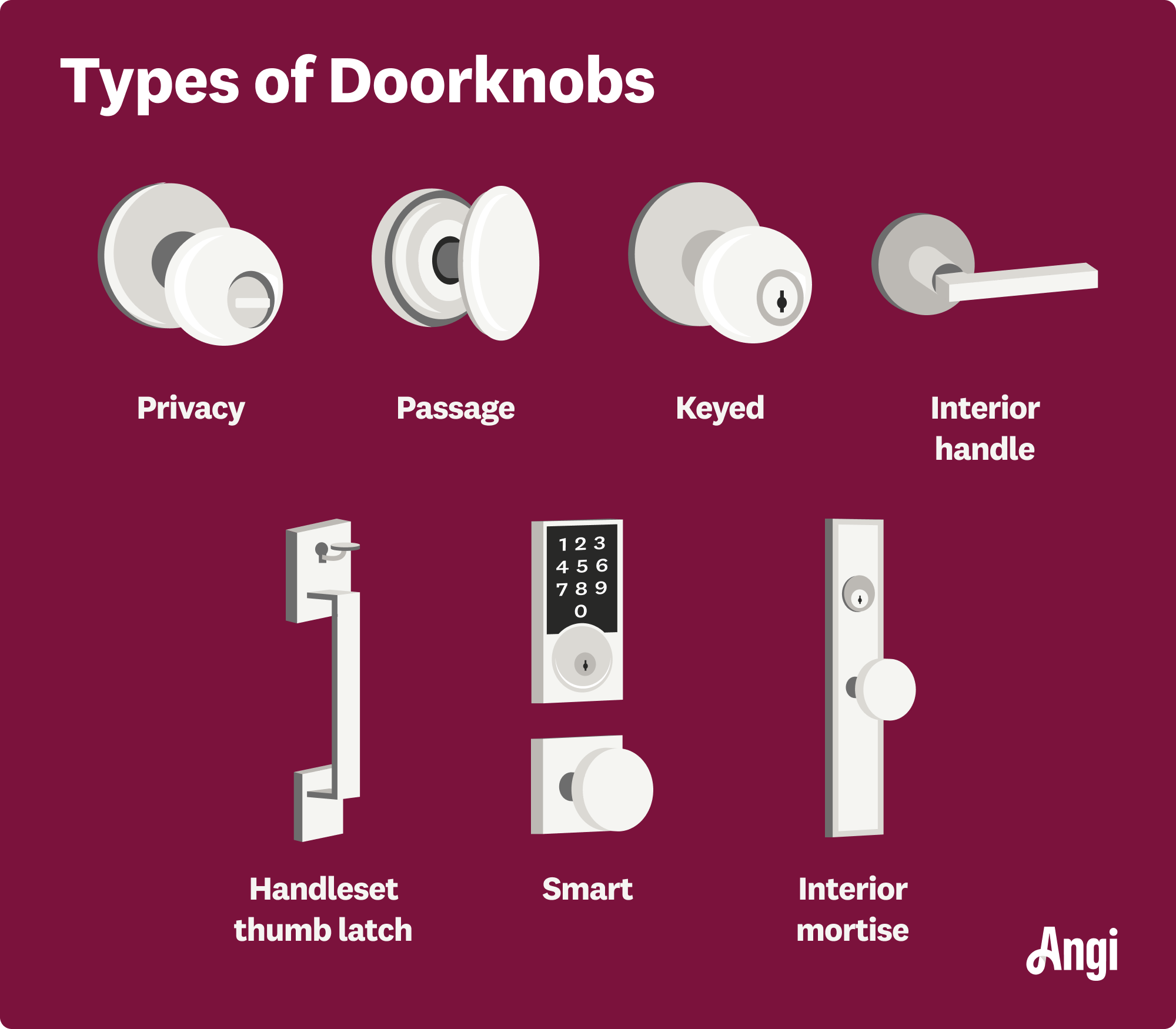
1. Privacy Doorknob
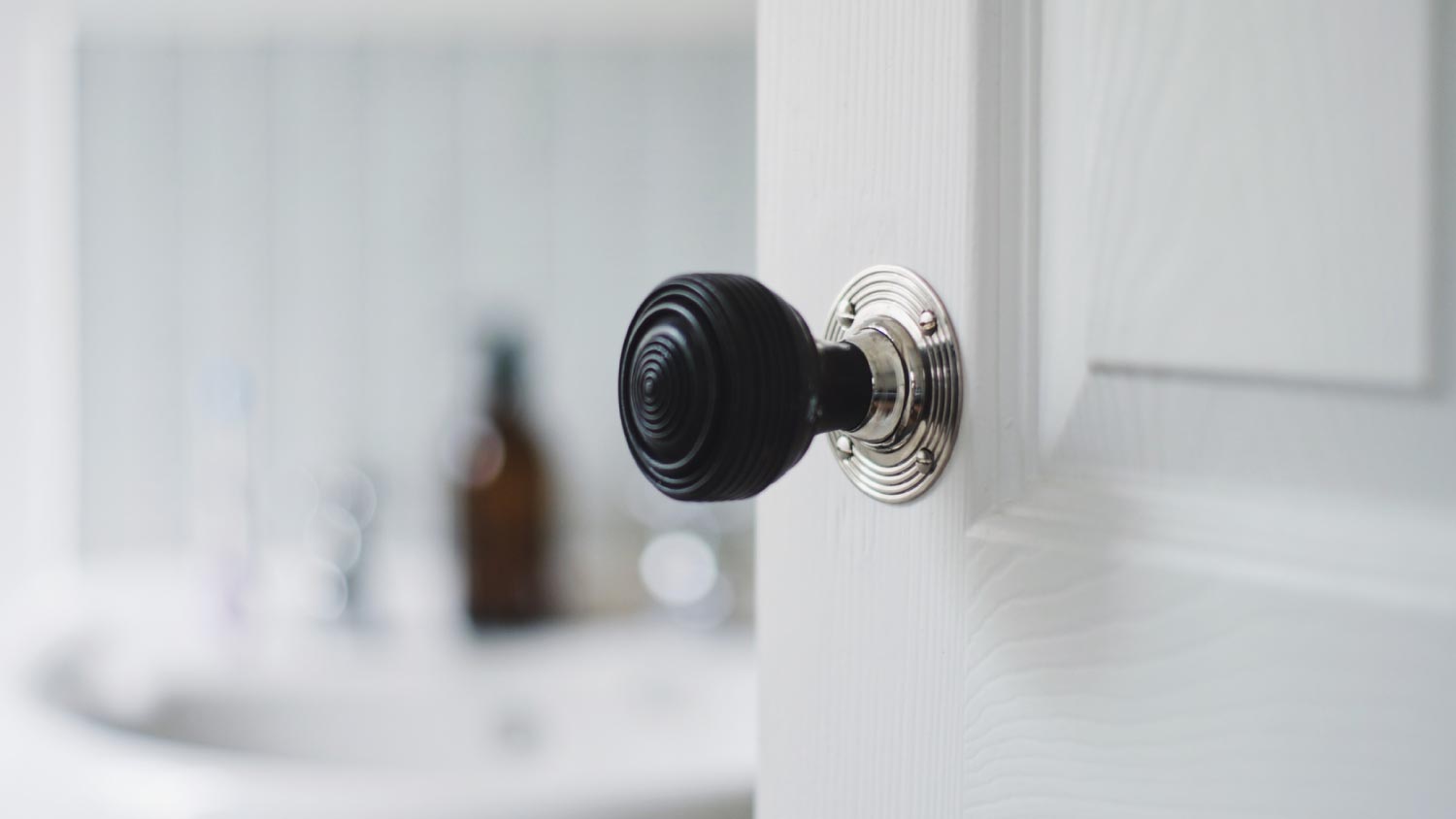
Most homeowners install a privacy doorknob on bedroom and bathroom doors. These use a simple type of door lock, like a button or turning lock, on the doorknob or slightly above or below it. A simple and affordable option, privacy knobs offer minimal security for interior doors only.
Some privacy doorknobs have rose plates for mounting, which means there are no visible screws for added security. Make sure you know how to replace a doorknob with no visible screws if you use this knob in your home.
Pros
Affordable
Easy to install
Provide privacy for bathrooms and bedrooms
Cons
Minimal security
Only suitable for interior doors
Best For: Interior bedroom and bathroom doors
2. Passage Doorknob
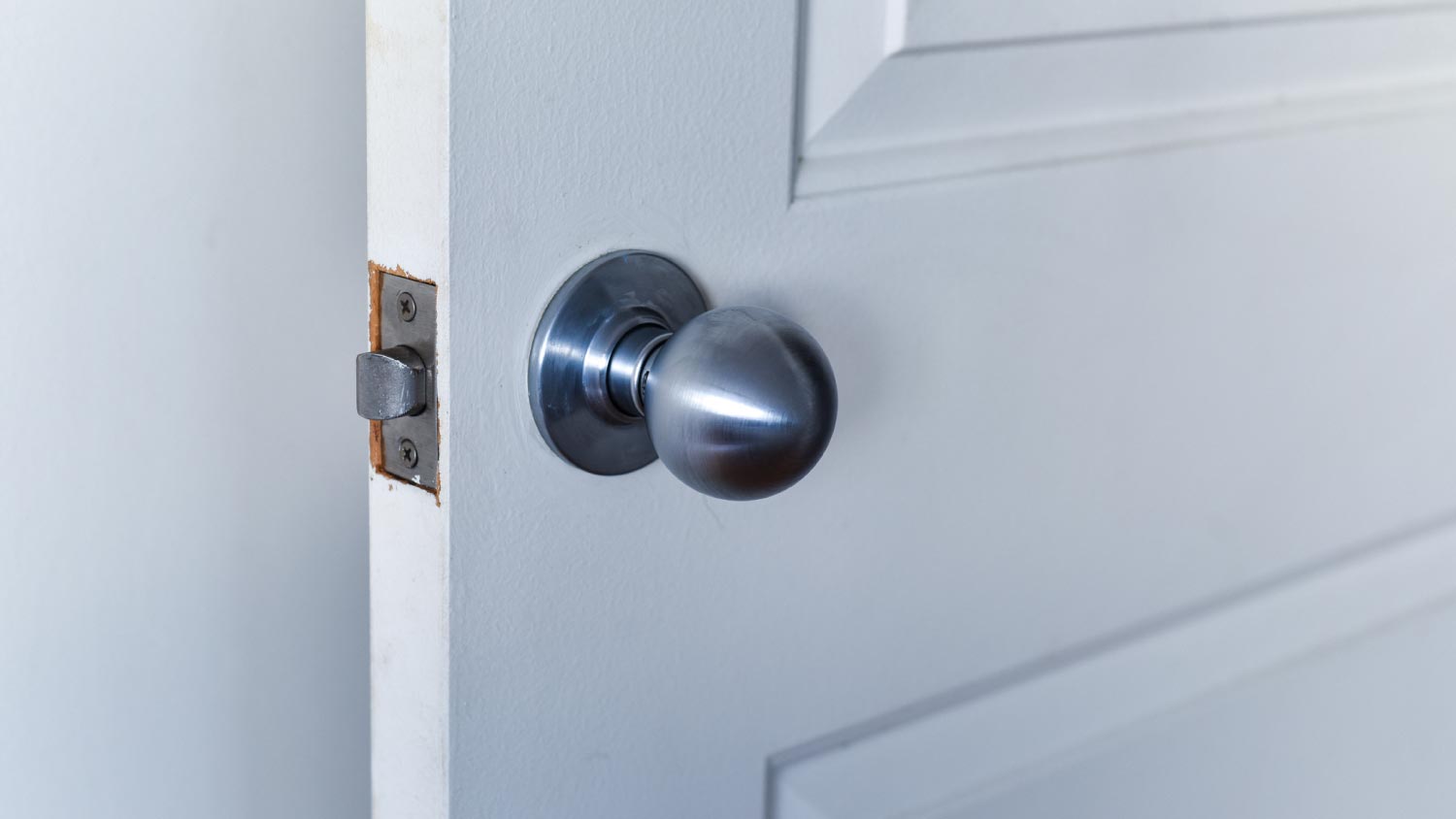
As its name implies, a passage doorknob separates one room from another and provides an easy way to pass through. This is similar to a dummy doorknob (more on that later) in the sense that there's no locking mechanism, but it has a handle that turns to open, which sets it apart. The passage doorknob offers no security, so it only serves as a means of keeping a non-private door closed.
Some models struggle to stay securely attached to the door, so be prepared to fix loose doorknobs if you use a less-expensive model.
Pros
Very affordable
Easy to install
Cons
No security or privacy
Only suitable for interior doors
Best For: Closet or pantry doors
3. Keyed Doorknob

A keyed doorknob is pretty self-explanatory—you need a key to unlock it. This doorknob offers the benefits of privacy and increased home security so you can use it on interior and exterior doors. This knob includes a locking mechanism that you can only open with a key, so it’s suitable for exterior entrances. It doesn’t provide as much security as a dead bolt, but you could couple it with one for primary exterior doors.
Pros
Added security for interior or exterior doors
Affordable
Easy to install
Cons
Not as secure as a dead bolt
You can get locked out
Best For: Exterior doors, coupled with a dead bolt, or interior doors leading to a basement or garage for added security
4. Dummy Doorknob
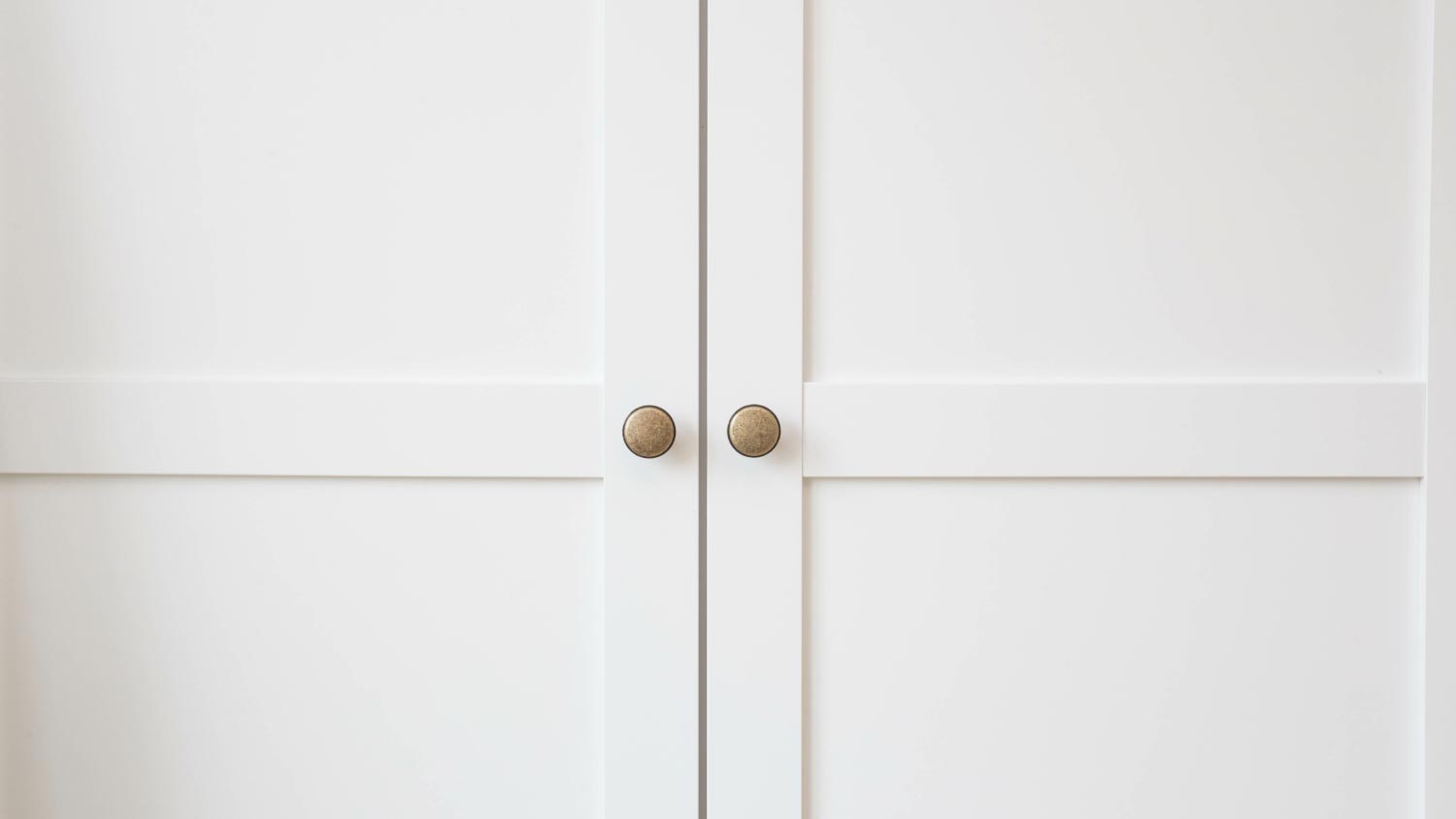
“All looks, no functionality.” This sums up the dummy doorknob. It’s essentially a decoration that can improve the look of the doors inside your home, although you can use it as a pull.
Some homeowners use this knob on closets, coupled with ball latches or spring latches, to hold the door closed. Otherwise, there are no internal parts of the doorknob that hold the door closed, including latches.
Pros
Decorative
Cons
No security
Only for interior doors without a latch
Best For: Closets or pantry doors without latches
5. Storeroom Doorknob

Looking for peace of mind when you store your valuables? A storeroom doorknob is ideal. It opens from the outside using a key to retract the latch bolt.
However, the main difference between a storeroom and a keyed doorknob is that a storeroom knob can't be unlocked or locked from the inside. This ensures the outdoor lock stays locked at all times, protecting whatever is behind the door. Once you’re inside the room, the door will remain unlocked for convenience and safety.
Pros
Always stays locked for security
Prevents anyone from getting locked inside a room
Cons
More expensive than standard locking knobs
Best For: Storage room
6. Interior Handle Doorknob
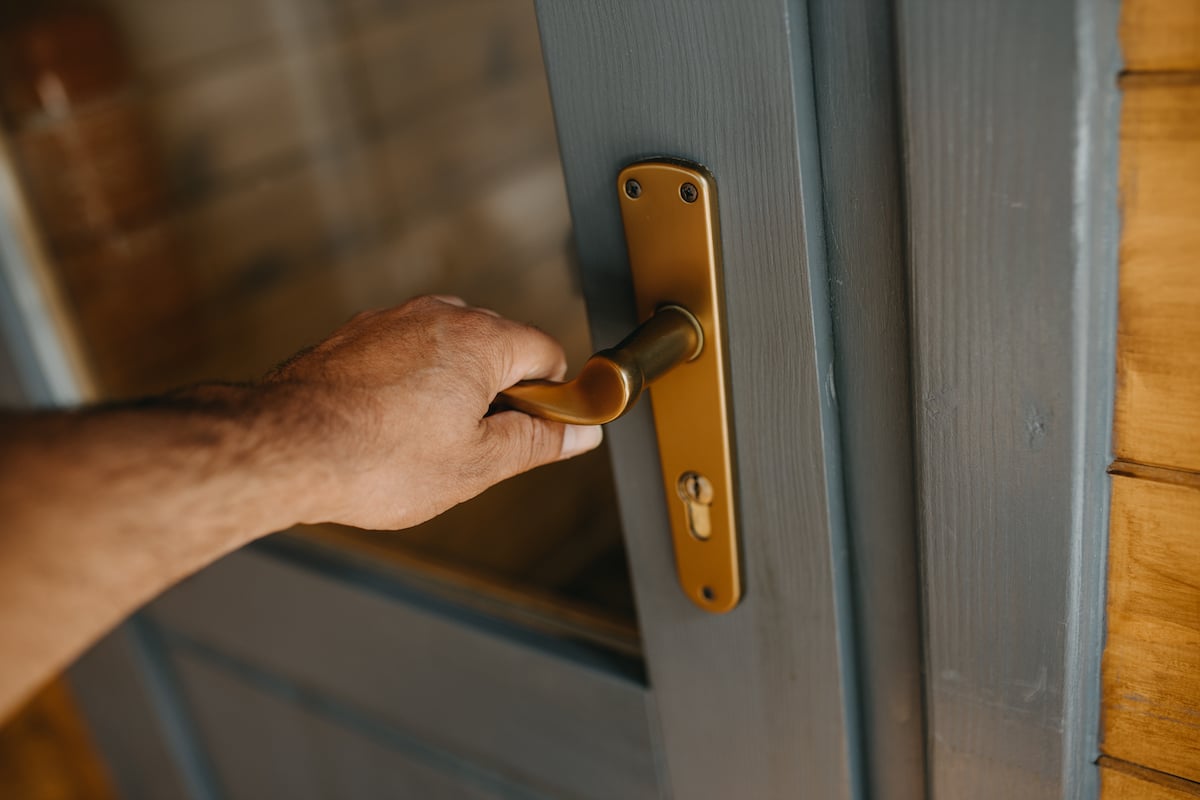
Outside of traditional hand-sized doorknobs, many homeowners decide to install elegant handles and other unique items in lieu of doorknobs on their interior doors. A handle-style doorknob comes in an interesting variety of materials, including:
Old pipes
Recessed ring
Barn door knockers or handles
Timber
Shaped brass or gold
The possibilities are endless—and, let's be honest—so are the costs associated with installing a high-end interior doorknob in your home. Ultimately, how much you spend will depend on which style you prefer and your budget. Ask a door installer near you for input or a quote for installing a doorknob.
Pros
Decorative
Easy to open when your hands are full
Can include locks for privacy
Cons
Can be quite expensive
Best For: Adorning interior doors
7. Handleset Lever Doorknob
A handleset lever doorknob is similar to an interior handle, but it’s rated for installation on the exterior of your home. This knob is usually more secure than an interior handle and often includes a lock that homeowners couple with a dead bolt for added security. This knob tends to be more decorative than a standard doorknob, so it adds to your home’s curb appeal.
This type of door handle can stand up to UV radiation from the sun, rain, snow, and heavy usage without getting damaged or fading. It’s more expensive than an interior handle, though.
Pros
More secure than interior handles
Highly durable
Easy to install
Decorative
Cons
Expensive
Best For: Adorning exterior doors
8. Handleset Thumb Latch Doorknob
A thumb latch doorknob includes a standard doorknob on the inside of your exterior door, but the outside has a large vertical handle that remains stationary. There’s a thumb latch that you press down on to open the door.
A thumb latch handle doesn’t add any security by itself. As such, you need to couple this type of door handle with a dead bolt. Additionally, it can be tricky to install since you need to drill through your door in the correct position to mount the bottom of the handle.
Pros
Decorative
Great for primary exterior entrances
Easy to open when your hands are full
Cons
Require a companion deadbolt for security
Can be expensive
Difficult to install
Best For: Primary exterior entrances
9. Smart Doorknob
A smart doorknob is a different type of doorknob that uses technology to make it easier for you to gain access through your exterior door. It comes in various styles to match your home’s aesthetic and personal preferences, and it also has varying levels of functionality for different purposes.
Some smart doorknobs will automatically unlock when you’re near your door and have your phone on you. Others will unlock if you approach the door with a key fob, and some can even use facial recognition to allow access to authorized users. They can be great for different purposes as well, like providing a keypad that gives access to anyone with a code. This can be useful for your primary home or even a rental unit.
Smart doorknobs provide good security and often include a dead bolt and make entrance for you and your family a breeze. Unfortunately, it can be tough to wire and install a smart doorknob, so you will need professional installation.
Pros
Extremely convenient
Provide good security
Come in a variety of styles
Offer a range of features
Cons
Require professional installation
Expensive
Best For: Primary exterior entrances
10. Interior Mortise Knob
An interior mortise doorknob is designed to work with mortise locks. Mortise locks are a very secure locking mechanism that combines a dead bolt with a latch, and they’re installed inside a cut-out in the door, so they aren’t easy to tamper with. They also require a physical key to open and are difficult to pick or duplicate.
Mortise locks come in two pieces—a latch that’s permanently mounted to the door frame and a lock body embedded inside the door. When a user closes and locks the door, the two parts fit together and lock securely. The dead bolt cylinder fits into an indentation in the door jamb and only opens when you insert and turn the key.
For these reasons, mortise knobs are popular in hotels and commercial and office buildings that take security seriously. They’re also one of the oldest types of locks, so you’ll see them in historic buildings and older homes.
Pros
Durable and long-lasting due to heavy-duty construction
Offers more security than standard locksets
Classic, traditional designs available in a range of finishes for period-specific doors
Cons
Difficult to install
Complex construction and installation can cost more than traditional knobs
Need more internal maintenance than simpler designs
May not fit in modern doors, especially those with pre-bored holes for cylinder locks
Best For: Historic homes and buildings with enhanced security needs
Considerations When Choosing Doorknobs and Locks
When choosing a new doorknob and lock, you’ll want to make sure your hardware fits and functions the right way. In addition to door sizes like height and width, consider these factors as you shop.
Door Thickness
Door thickness refers to how wide the door is from one door face to the other. You can measure thickness by opening the door and measuring across the edge that faces the door jamb. Most interior doors are 1 ⅜ inches thick, and exterior doors are about 1 ¾ inches thick. However, this isn’t always the case as older doors, doors in historic homes, and custom doors may vary.
While some locksets come with adjustable mechanisms, some doorknobs are designed to fit on doors with a certain thickness. If the doorknob set you choose doesn't fit your door, it will be challenging or impossible to install. You may need to buy specialized parts or modify it to fit, which can make it less sturdy and secure compared to a knob that’s a precise fit.
Bore Hole Measurements
The circular hole cut into a door where the knob or lock mechanism fit is called a bore hole. Most doors have two bore holes—one for the knob and one for the latch or dead bolt. Most bore holes measure 2 ⅛ inches, but non-standard doors and older doors can have bore holes of varying sizes.
The bore hole size dictates the type of doorknob or lock you can install. If it’s too small, you’ll need to make it larger, and if it’s too large, you’ll need an adapter plate or a different knob that fits. To avoid this issue, measure your door’s bore hole before you buy a new doorknob. If you need help, call a door repair service to help measure or change your door’s bore hole.
Backset Requirements
The backset is the distance from the edge of the door to the center of the bore hole. Most backsets measure 2 ⅜ inches or 2 ¾ inches. You need to buy a doorknob that is manufactured to work with your specific backset size. If they don’t match, the knob (and possibly the lock) won’t align with the door’s edge, and you won’t be able to close or lock the door correctly.
Bolt Type
The bolt is the part of the door lock that extends out from the door into the door frame to secure the door closed. Popular bolt types include latch bolts, dead bolts, and mortise bolts.
Latch bolts: These spring-loaded bolts are common in doorknobs and retract when you turn the knob and automatically extend when you release the knob.
Dead bolts: Dead bolts require you to use a key or your thumb to lock and unlock the door and offer better security than latch bolts. They’re used more on exterior doors.
Mortise bolts: Mortise bolts are part of mortise locks. They offer the best of both worlds: a latch mechanism and a dead bolt in one lockset.
The type of bolt you choose depends on the level of security and functionality you need. For interior doors, latch bolts are often the better choice. For exterior doors or interior doors to rooms that need more security, choose a dead bolt or mortise bolt.
Cost to Install a Doorknob
It can cost as little as $30 to $50 to install a doorknob, depending on your chosen hardware. Doorknob hardware can cost up to $300 or more if you select a high-end locking knob or a decorative exterior piece. Labor for door repair costs $30 to $120 per hour and will mainly be impacted by where you live and the complexity of the repair.
DIY vs. Hiring a Pro
If your doorknob just needs a simple one-to-one replacement, it’s an accessible DIY project. You’ll just need a screwdriver and hex wrench set to install most standard knob kits. If you need to move a knob or install one in a place where there hasn’t been a knob before, your project will be a little more complicated. You’ll need advanced tools like a hole saw and a chisel to accommodate the latch. Unless you have experience and own the tools, hiring a local door repair pro makes more sense than doing it yourself.



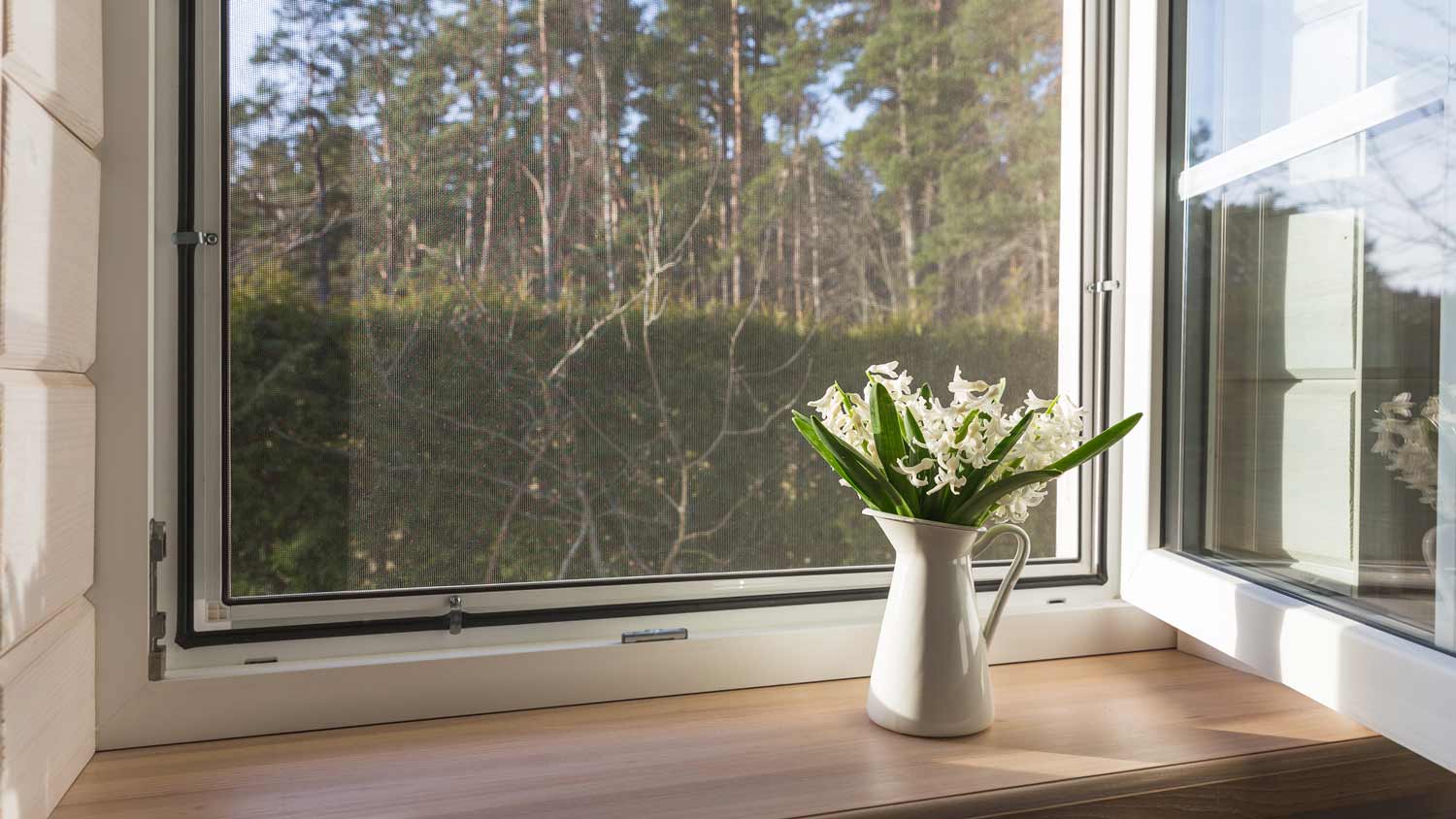

- Your Simple Guide to Different Doorknob Parts
- The 12 Most Common Types of Door Locks
- All the Parts of a Door: The Homeowner’s Guide
- Door Latches Explained: What Are the Retractable Latches on a Frame Door For?
- How to Reinforce a Door to Increase Home Security
- 11 Common Door Latch Types and How They Work
- How to Secure a Door Without a Lock While You Wait for a Locksmith
- The 4 Most Common Storm Door Handle Types
- Standard Door Sizes for Interior and Exterior Doors
- 8 Common Reasons Your Door Won’t Open (and How to Fix It)










